#philippe d'orléans gif
Text
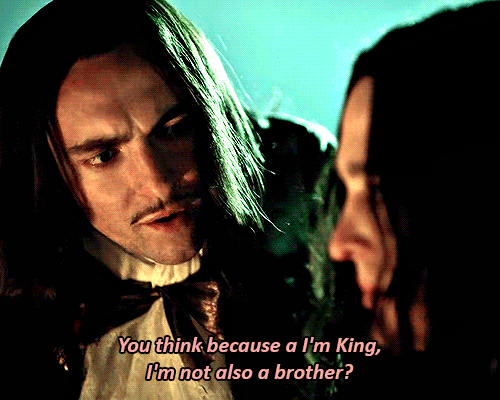

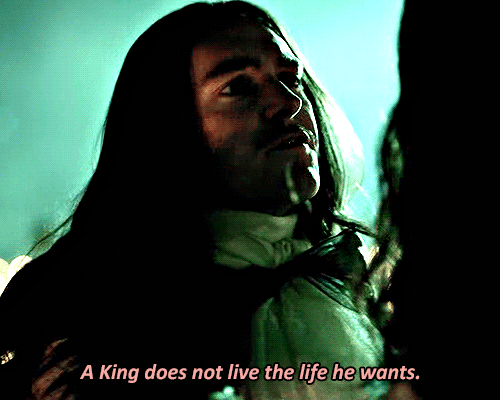
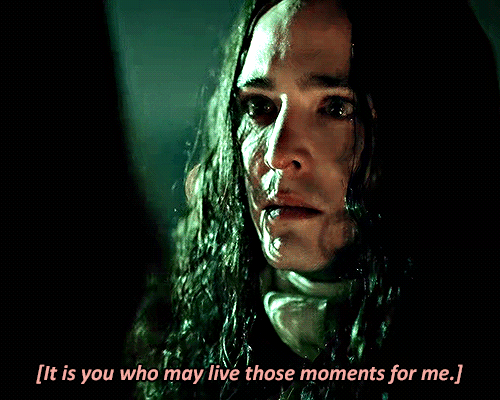
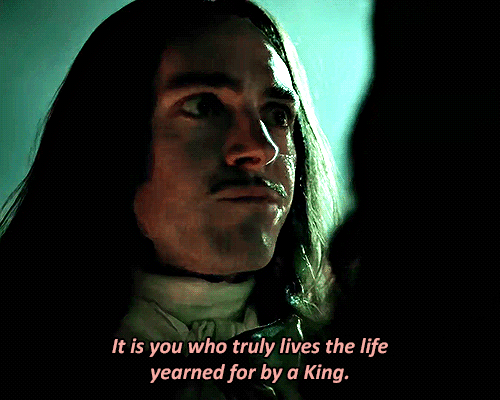
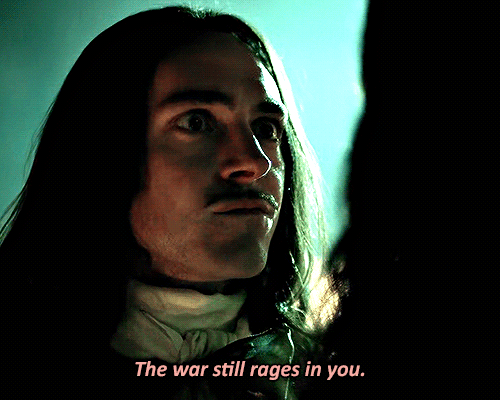
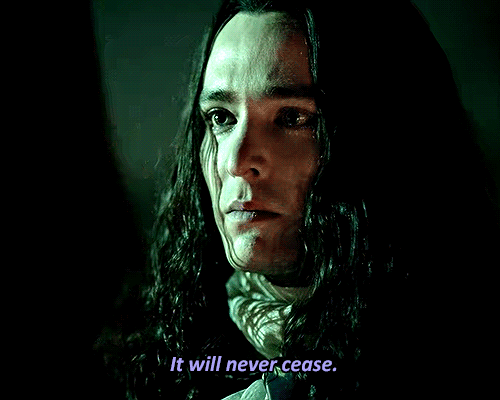
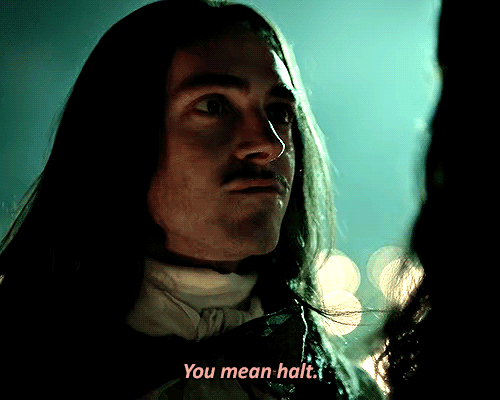



"On the field, I saw a man, young like we were. He carried his brother in a sack over his shoulder. He told me he had promised their mother to take him home. Would you do that for me? I would, but you? I do not know."
#i thought about this show yesterday and while i think the script and acting are bad...it's somewhat entertaining to watch idk#it's just drama after drama...although this scene is actually great though...#versaillesedit#versailles#philippe d'orléans#periodedit#periodedits#perioddramaedit#cinemapix#tvarchive#tvedit#perioddramacentral#alex vlahos#george blagden#louis xiv#dailytvfilmgifs#tvfilmcentral#userstream#tvfilmdaily#by jen
92 notes
·
View notes
Text

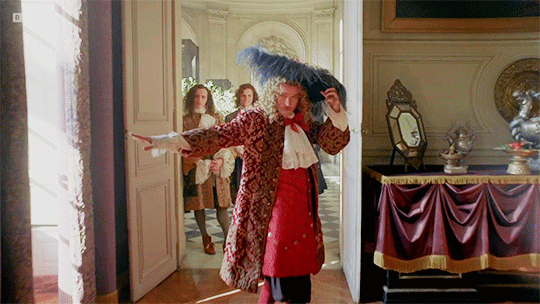
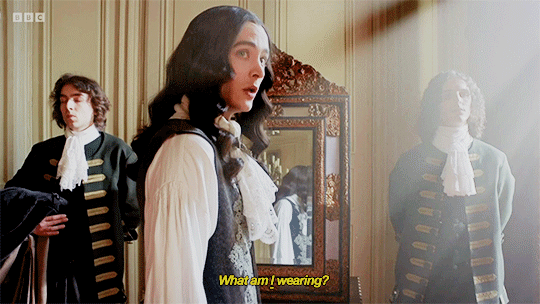



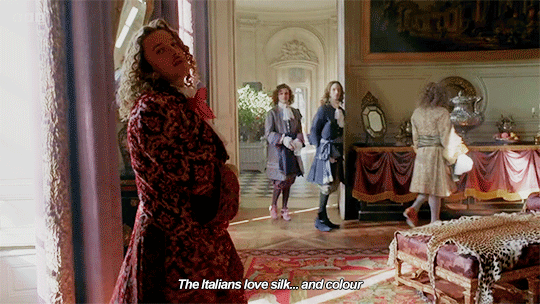
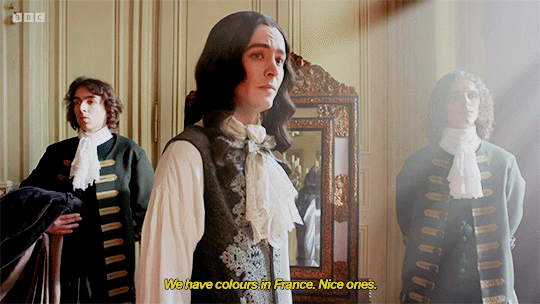
Versailles 02x02
"Fashion will be our standard, darling, and the people will walk behind you. And me."
#versailles#philippe d'orléans#chevalier de lorraine#alexander vlahos#evan williams#perioddramaedit#sorry to be versaillesposting in the year of our lord 2024. which i assume is somewhat passé.#but for one thing this is my blog and if you're looking at it that's on you#and for another. the FACES alexander vlahos is making here.#i have been laughing about them for like 4 hours straight.#mine: versailles#my edits
114 notes
·
View notes
Photo
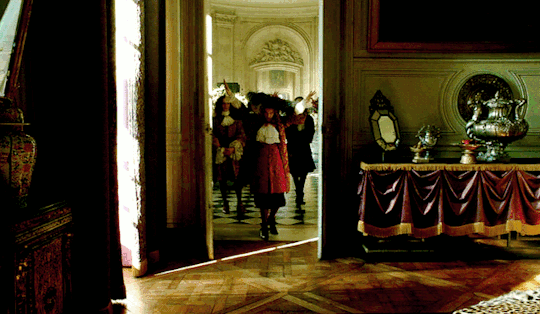
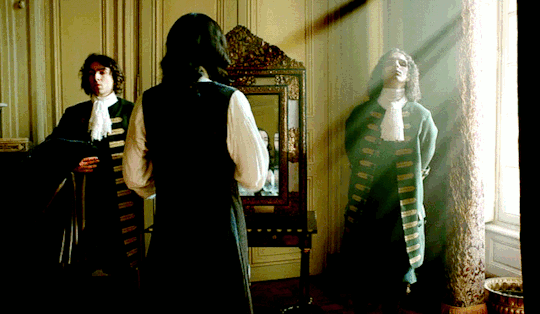


#versailles#versaillesedit#chevalier de lorraine#philippe d'orléans#alexander vlahos#evan williams#perioddramaedit#weloveperioddrama#userhayf#chewieblog#cinemapix#userstream#userbrit#userthing#usersource#gifshistorical#userperioddrama#usersugar#dailytvfilmgifs#usersansa#userrizz#cinematv#*my gifs
360 notes
·
View notes
Text
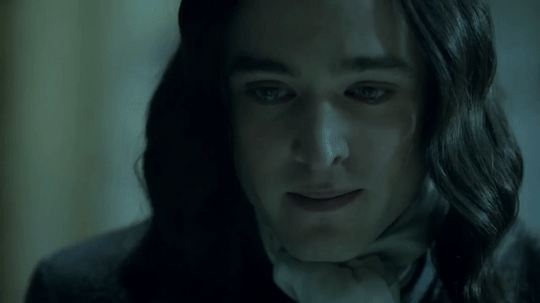

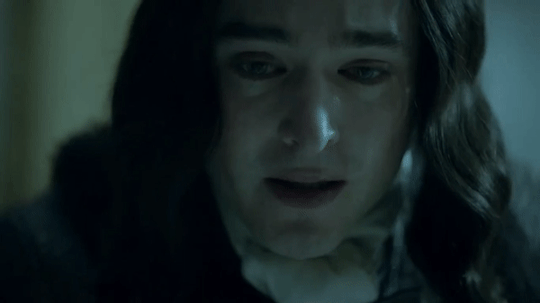
#versailles#versailles gif#philippe d'orléans#philippe d'orléans gif#philippe of orleans#philippe of orleans gif#duc d'orléans#duke of orleans#alexander vlahos#alexander vlahos gif
45 notes
·
View notes
Text
BEST MonChevy Songs❤️🔥❤️🔥❤️🔥
youtube
youtube
youtube
youtube

2 notes
·
View notes
Text

Charles Lockhart, yes, he locks hard onto our hearts. He is a bon vivant; plays women like a fiddle. But with his irresistible charm, you don't know if you want to scream at him or fall for him even more. Truth is, sometimes it hurts so good.
8 notes
·
View notes
Text
A regency in question.
The most fundamental challenge to the legitimacy of Richelieu's régime de l'extraordinaire did not, though, come from within the area of ideological debate. For Richelieu the most damaging concern was the reluctance of Louis XIII to provide him with the unconditional support that was vital to the legitimacy of his status and his claims to authority. Much has been written about the relationship between Louis and his cardinal-minister, some of it blatantly anachronistic and psychohistorically speculative. It is however clear that Louis, whether through his own judgement or through the prompting of those around him, grew ever more aware of the distortion of royal authority implied by his dependence on, and apparent subservience to, his ministerial servant. A major factor behind the literature of opposition, the fevered plotting and the organized conspiracies of the period after 1636 was Louis' own, frequently declared hostility to Richelieu's excessive power and control of the state. Many of those conspiring against Richelieu did so in the convinction that they were serving the king, rescuing him from subservience to an overbearing and manipulative minister. Yet Louis remained fundamentally ambiguous in his attitudes: partly because Richelieu sold him a vision of dynastic prestige and territorial gains built on the undermining of Habsburg power; partly because Louis recognized the sheer complexity of government, policy-making, and organization over which Richelieu and his subordinates presided, and felt no confidence that he could easily be replaced.

Opponents of the cardinal's pretensions found a further, even more widely supported, motive after 1638. Following the birth of the future Louis XIV and his brother, the convinction grew that Richelieu planned to seize control of the regency in order to secure the continuation of his own power and policies. Louis XIII's health started to deteriorate from 1640, and it was expected that Richelieu would survive his master. Before the birth of Louis' sons the succession had rested with the king's brother, Gaston d'Orléans, and Richelieu had no illusions that his own position would survive into the reign of King Gaston. But a royal minority opened a very different prospect.
Customary arrangements in a regency would give power either to the queen mother and/or to a council of princes of the royal blood; custom and traditional expectation determined what could and could not be enacted before the king came of age. To subvert this, to remove the queen from involvement in the regency and to establish a regency council dominated by Richelieu, would require substantial political leverage. In pursuit of this objective Richelieu was fortunate that Louis XIII may have distrusted his first minister's motives, but was even more concerned that his Spanish wife, Anne of Austria, would betray his legacy and make a concessionary peace with Spain […]
Few expected that Richelieu would predecease his master by a few months, and of course this resolved the particular anxiety about a ministerial regency. What Richelieu's death did not resolve was the debate about the legitimacy of government by first minister, and the pent-up resentment that this had generated since 1635. The vituperative denunciation of Richelieu's rule by Jean Le Boindre in the Parlement as "destroying the liberty of France… [which lay] oppressed under the weight of his own ambition" was widely echoed in memoirs and correspondence.
But Louis XIII remained committed in his last months of life to the war with Spain, and resisted the blandishments of those who, now freed from Richelieu's overbearing presence, urged him to consider again the immense burdens the war imposed on his people and the strategic rationale for continuing it.
David Parrott- 1652- The Cardinal, the Prince, and the Crisis of the Fronde
#xvii#david parrott#1652: the cardinal the prince and the crisis of the fronde#louis xiii#cardinal de richelieu#louis xiv#philippe de france#monsieur#gaston d'orléans#the thirty years war
10 notes
·
View notes
Text

January 7, 2024: Welcome to 2024!
Okay, I have been writing (and there is a LOT). However, I've had to deal with bedbugs for the past six months (and going). I have no time to go into the logistics (and the blame sits squarely on the shoulders of my stepsister), but I'm here to have some fun and tell you about what is going on with the HOB.
Without too much detail of the private conflicts that plagued this project since its creation upon the heels of the success of @tkwrtrilogy2, @tkwrtrilogy, and @tkwrtrilogy3, there has been an overhaul. Also, the latest addition to the trilogy will make its debut on Wattpad (but will come here eventually).
First, the OVERHAUL: Welcome to the HOB Universe.

You're asking yourself: WTF is this? Well, the best explanation of it can be seen here. All that applies is that this takes place in 17th-century France rather than Middle Earth.
I will be overhauling the Tumblr for @lesecretdelamaisondubourbon. There is a reason, but to find that out, you'll have to read the memoir about all of this (TBA). Either way, it comes on the heels of family drama and the death of a friendship that was supposed to last forever (according to her). But, the book (known by the title XIV) is going up on Wattpad, so while it is being overhauled over here, you can read it in its proper order over there.

XIV: The life and times of Louis XIV as told by Louis XIV--if you haven't figured that out yet. It is part of Book III; his father's story (@thesecretofthehouseofbourbonbook) is Book II.
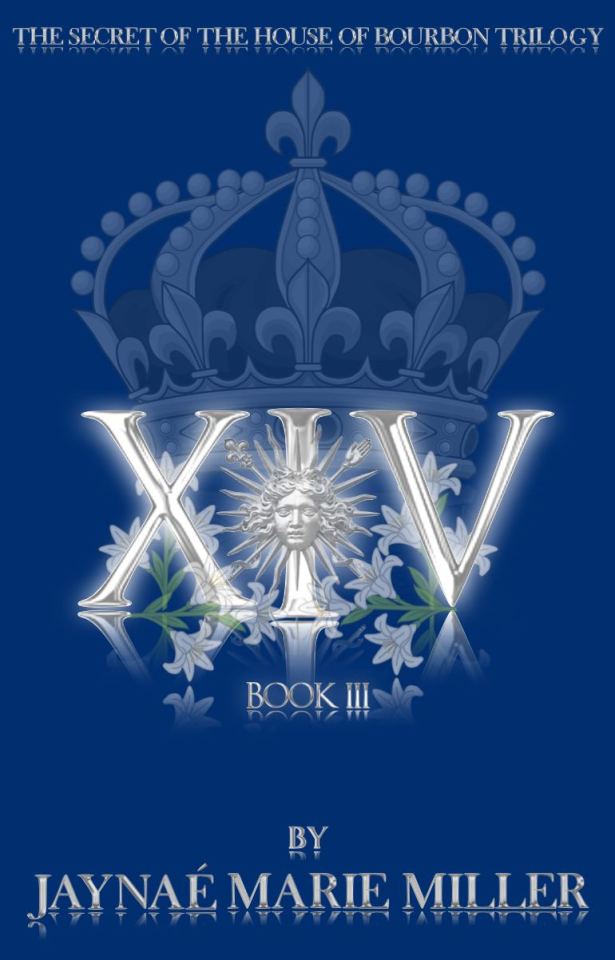
Now, about that other book: The original title of the book (that was going to be written by my former co-author) was Monsieur. If you guess that the book was going to be about Philippe I, Duc d'Orléans (younger brother of Louis XIV), you were right.
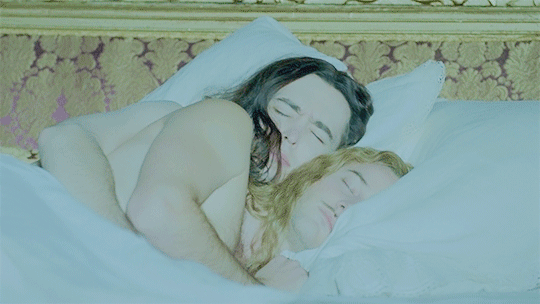
If you think this is a retelling of centuries of rumor and innuendo, you would be wrong. This will be his story--told by Philippe. Under the title of Son of France (Fils de France in French), this is the story you were never told. After 383 years, it is time.
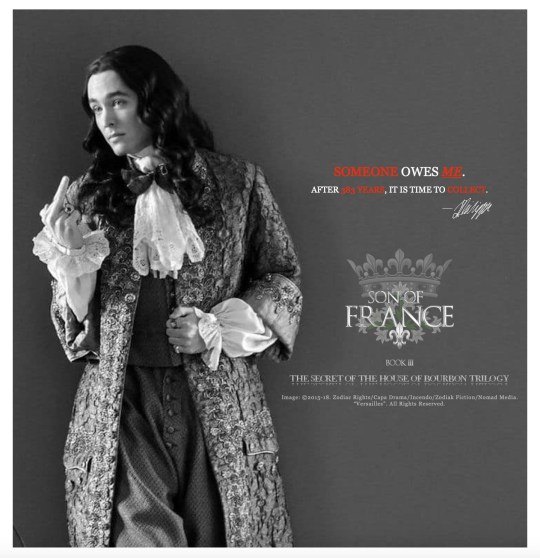

His story officially began in January of 2024, and he will be following his brother Louis here once he debuts on Wattpad. Stay tuned for more. He's part of the universe now.
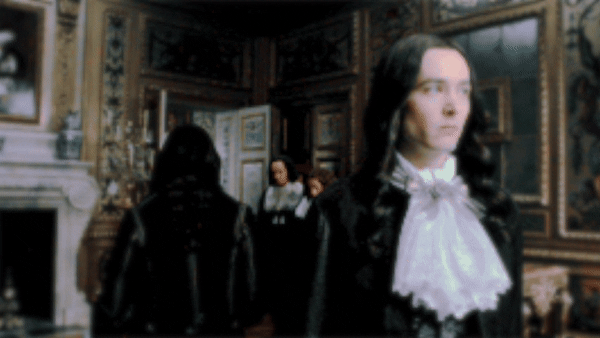
#historical drama#historical fiction#xiv#louis xiv#monsieur#philippe i#duc d'orleans#books#novels#wattpad#hobnewsfeed#the official hob#the official hob trilogy#hob literary universe#literature#writers on instagram#writers on twitter#writers on tumblr#writers on wattpad#writers on wordpress
7 notes
·
View notes
Text
10 Famdoms, 10 Characters
I was tagged by @st-eve-barnes Thank you!
Aemond Targaryen - HOTD

Loki - MCU

Spike - Buffy/Angel

Vanessa Ives - Penny Dreadful

Osferth - TLK

Bucky Barnes - MCU

Alice Morgan - Luther
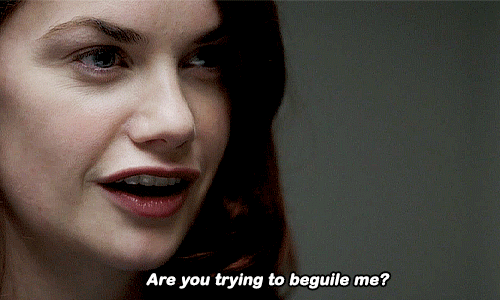
John Luther - Luther

Lagertha - Vikings
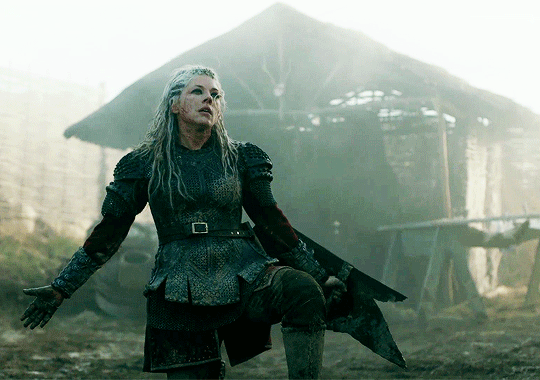
Philippe d'Orléans - Versailles

No pressure tags: @livvrusso @itbmojojoejo @chattylurker @boundlessfantasy @marthawrites
10 notes
·
View notes
Text
23 / 08 / 2022
🇫🇷 FRANÇAIS / FRENCH 🇫🇷
Aujourd'hui je lance une nouvelle série d'articles. Après RECOMMANDATION DE FILM / SÉRIE TÉLÉVISÉE, HOMME DU JOUR, et PERSONNAGE DU JOUR, voici le premier numéro de COUPLE GAY DU JOUR.
Je suis gay donc forcément je vais parler de couple gay de personnage fictifs ou pas, mais plutôt des personnages issus de films et de séries télévisées (et peut-être de livres). Les deux hommes formant le couple gay dont je parlerais ne seront pas forcément gay eux-mêmes (par exemple il peut y avoir un gay en couple avec un homme bisexuel), mais l'idée est de parler de couples de fictions que j'apprécie, qui m'inspire et me font rêver. Peut-être que cela vous donnera envie de voir les films et les séries télévisées dont ils sont issus, comme lorsque je vous recommande des séries TV ou des films.
Les couples dont je vais parler ne sont pas apparaître par ordre de préférence.
COUPLE GAY DU JOUR #1 : MONCHEVY
Philippe d'Orléans (Alexander VLAHOS) et le Chevalier de Lorraine (Evan WILLIAMS) - série télévisée Versailles (2015 - 2018)

Phillipe d'Orléans et le Chevalier de Lorraine sont deux personnages principaux de la série Versailles. Composée de 3 saisons, la série télévisée Versailles raconte une partie du très long règne de Louis XIV de France (joué par Georges Blagden). À chaque saison, il y a un antagoniste différent qui complote contre le Roi, et chaque saison couvre une période différente du règne de Louis XIV.
On suit la vie à la Cour, et tous les personnages tournent autour de Louis XIV. Bien rythmée, très jolie à régarder car les costumes et les décors sont plutôt fidèles historiquement, la série invente plusieurs personnages intéressants à suivre. En revanche, pour ce qui est des personnages historiques, certains sont traités de manière caricaturales, voir totalement différente de comment ils étaient en réalité.
Pourtant, je pourrais parler longuement des choses fausses que la série invente, mais je préfère me consacrer à l'un des points positifs de la série : le couple formé par Philippe d'Orléans et le Chevalier de Lorraine. C'est le seul couple gay de la série mais ils apparaissent dans tous les épisodes, donc ils sont très présents et importants.
Lorsque commence la série, les deux hommes sont censés se connaître depuis au moins une dizaine d'années et sont déjà amoureux. Pour une fois, voilà un couple gay qui se connaît et qui s'aime, l'on n'a pas affaire à des scènes où ils apprennent à se connaître ou à se séduire. Alexander Vlahos interprète Monsieur le Duc Philippe d'Orléans, frère cadet du Roi Louis XIV. Evan Williams joue le rôle du Chevalier Philippe de Lorraine. Même s'ils portent le même prénom, le Chevalier est désigné sous le nom de "Chevalier" pour qu'on le reconnaisse.
Ces deux hommes sont des personnages historiques, en tout cas les personnages de la série sont inspirés de deux personnes ayant réellement existés. Philippe d'Orléans (né en 1640, mort en 1701) est le fils cadet de Louis XIII de France et Anne d'Autriche, il est donc le frère de Louis XIV. Le chevalier Philippe de Lorraine (1643 - 1702) est un noble français, il a rencontré le Prince Philippe vers 1658. La série commence vers 1668, ils se connaissent donc depuis une dizaine d'années : Philippe d'Orléans est censé avoir 27 ans, le Chevalier en a 24.
Dans la saison 1, le Chevalier complote pour faire de son amant Philippe le nouveau Roi de France. Il s'allie à d'autres nobles afin de destituer le Roi, et sa situation devient très compliqué. De son côté, le Duc d'Orléans (âgé de 28 à 30 ans) fait face à la jalousie qu'il éprouve pour le Roi.
Dans la saison 2, le Chevalier de Lorraine revient d'exil et se retrouve mêlé à l'Affaire des Poisons : c'est un scandale retentissant dans les années 1670 car des nobles français ont été accusés de consommer des poisons achetés à des sorciers et des sorcières. Quant à Philippe d'Orléans (âgé de 30 à 40 ans à peu près), il a enfin de plus en plus d'importance politique à la Cour.
Enfin, dans la troisième et dernière saison, Philippe (qui a entre 40 et 44 ans) va enquêter sur l'identité de l'homme au masque de fer, et le Chevalier de Lorraine se rapproche d'une fictive noble protestante à une période où le Roi fait arrêter les protestants de la cour s'ils ne se convertissent pas au catholicisme. Durant la saison 3, le couple s'éloigne mais il finit par se rapprocher, pour notre plus grand plaisir.
J'ai écrit l'âge qu'est censé avoir Philippe d'Orléans à chaque saison sauf qu'il n'y a aucune date donné dans la série, et les personnages vieillissent peu.
Dans la série télévisée comme dans la réalité historique, le Chevalier de Lorraine a eu de nombreux problèmes avec les deux épouses de Monsieur le Duc d'Orléans. Dans la première saison, il fait tout pour rendre malheureuse Henriette d'Angleterre, cousine et première épouse de Philippe d'Orléans. Dans la deuxième saison, il recommence avec la nouvelle épouse du Duc, Élisabeth-Charlotte de Bavière (surnommé Liselotte).
Pourtant, contrairement à la réalité historique, le Chevalier et Liselotte finissent par s'entendre plutôt rapidement, et deviennent même amis. Dans la vraie vie, ils ont attendus quatre ans avant la mort du duc pour enfin faire la paix. Le trio formé par le Duc d'Orléans, la Duchesse et le Chevalier est vraiment très drôle et très ambigu.
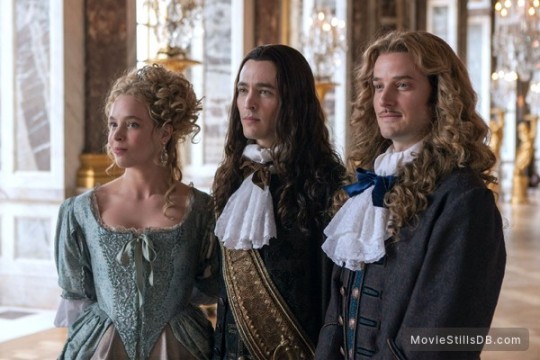
Le Chevalier de Lorraine est un grand homme blond musclé et le Duc est brun. Ils sont très différents surtout au niveau de la personnalité et de l'attitude.
Monsieur le Duc Philippe d'Orléans est un prince qui aime se travestir en femme, même si cela n'arrive qu'à peu de reprises dans la série télévisée. Il est censé avoir été élevé en fille par sa mère dans l'objectif de le rendre faible et soumis. Effectivement, il passait son temps à se consacrer à la mode et aux frivolités. Ce qui est bien dans la série Versailles c'est que la complexité de Philippe d'Orléans est montré. En effet, il était certes efféminé et frivole, passant beaucoup de temps à danser et à coucher avec ses amants, mais il était aussi un grand mécène, et surtout un valeureux guerrier qui a remporté plusieurs batailles au point de faire de l'ombre à son frère le Roi.
Dans la série, ce qui le rend complexe et intéressant c'est sa relation à son frère, mais revenons en à son couple avec le Chevalier. Tous deux sont très proches l'un de l'autre, mais c'est surtout le Chevalier qui se montre jaloux. Il n'est pas marié donc il n'aime pas voir le Duc passer du temps avec ses femmes. Il se montre très protecteur avec son amant, et complote pour qu'il soit Roi. Philippe était en effet plus populaire que le Roi car il passait plus de temps à Paris qu'à Versailles. Le Chevalier est un homme exubérant, qui aime se montrer et affiche sa supériorité. Il est manipulateur et arrogant, mais il cache une envie d'être aimé pour lui.
Ainsi, ce qui fait la beauté de ce couple c'est qu'ils sont vraiment fait l'un pour l'autre. Le temps et la politique les éloigne parfois mais ils finissent par se retrouver car ils s'aiment. Dans la réalité historique, certains historiens pensent que le Duc d'Orléans était sincèrement amoureux du Chevalier de Lorraine, mais que lui n'était pas amoureux et se servait de lui pour obtenir des faveurs. Il était pourtant un guerrier dont le roi se servait pour manipuler son propre frère.
Dans la série, le Duc Philippe évolue, car il est d'abord dominé et manipulé par le Chevalier, et il finit par ne plus dépendre de son amant.
Ce qui est bien, c'est que c'est un couple qui aurait pu exister de nos jours. Ils sont gay mais il leur arrive de coucher avec des femmes, ils sont ambitieux et mènent une carrière chacun de leur côté mais parfois en s'aidant l'un l'autre. Ils se disputent, couchent avec d'autres personnes, mais se réunissent.

Le couple formé par le Duc d'Orléans et le Chevalier de Lorraine a marqué l'histoire de l'homosexualité car ils font parti des rares nobles à avoir pu afficher leur sexualité sans être puni par la loi ou le regard de la société. À la cour Française, il fallait être noble pour pouvoir avoir une sexualité libre, malgré le poids de l'Église.
Le véritable chevalier de Lorraine était d'ailleurs bien plus cruel que son homologue de fiction : il aurait assassiné un jeune marchand de gaufres qui aurait refusé de coucher avec lui. Plus tard, il a créé une confrérie rassemblant des nobles homosexuels dont l'emblème était un homme qui écrase une femme. Le Chevalier et les autres amants du duc d'Orléans ont violés un jeune noble gay, le Duc de Vermandois (fils de Louis XIV et de sa maîtresse Louise de La Vallière).
Bref, la vie à la Cour était sans doute cruelle. Le Chevalier de Lorraine était donc réputé pour être un homme magnifiquement beau mais prêt à tout pour avoir de l'argent et des titres. Dans la série, il est attachant malgré son arrogance, et est l'un des personnages les plus drôles (il fait plein de blagues).
Le Duc d'Orléans et le Chevalier de Lorraine partagent le même prénom, mais ils se comprennent vraiment, ont des désirs communs. Ils sont tous les deux de beaux jeunes hommes et sont attirés par le corps de l'autre, ils ont d'ailleurs de nombreuses scènes de sexe très excitantes et explicites. Il semblerait que le Duc était passif avec le Chevalier mais parfois actif avec ses autres amants. À la fin de sa vie, le Chevalier a conservé les faveurs du Duc d'Orléans en lui fournissant de beaux jeunes hommes avec qui coucher. Pourtant, ils ont été en couple pendant longtemps (une quarantaine d'années), et la série télévisée montrent qu'ils ont été heureux ensemble.
Ils s'embrassent à presque tous les épisodes (quand ils sont en couple, pas quand ils sont censés se disputer). Je vous met d'ailleurs en lien une chaîne YouTube qui a compilé les moments où apparait le couple MonChevy (surnom qui est une contraction de Monsieur et de Chevalier, les titres des deux Philippe).
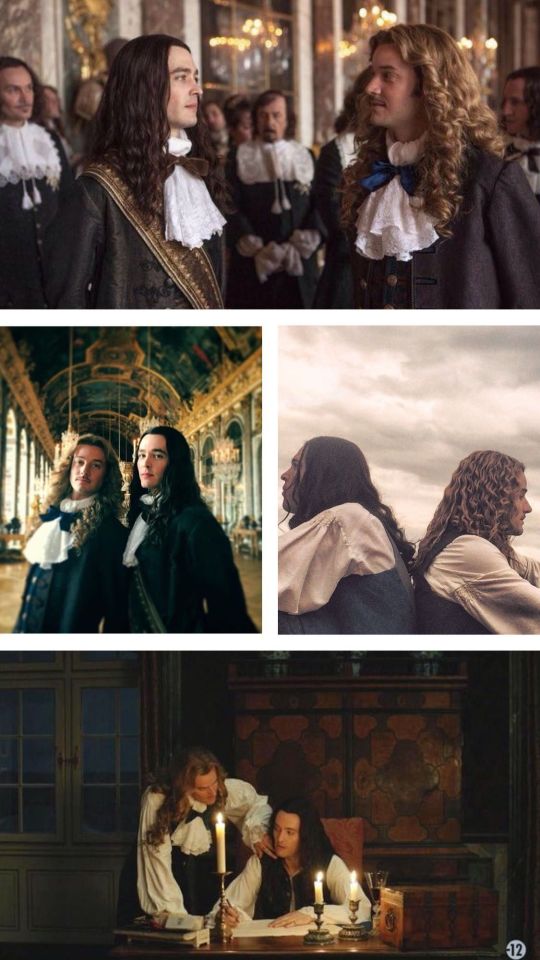
Ils portent de sublimes costumes et de magnifiques perruques, ils sont censés beaucoup aimer la mode, même si le Duc est moins coquet qu'il ne l'était dans la vraie vie.
Il y a plusieurs scènes absolument sublimes dans ce couple. La première qui me vient en tête c'est celle où le Duc et le Chevalier regardent le feu dans la cheminée après une dispute et le Chevalier pleure lorsqu'il dit qu'il préfère mourir plutôt que d'être détesté par l'homme qu'il aime. J'avais trouvé cela très beau de voir cet homme si confiant et dominant, qui protège son amant et se montre jaloux dès qu'il est avec un autre, confier ainsi ses sentiments avec sincérité.
Dans une autre scène, le couple est au Château de Saint-Cloud, demeure du Duc, et le Chevalier de Lorraine dit à Philippe d'Orléans : "Ton frère est peut-être le Soleil, mais toi, mon cher, tu es une étoile. Et si le soleil brille le jour, l'étoile éclaire nuit par sa brillance.".
Cette phrase est magnifique car on ressent l'admiration que le Chevalier éprouve pour son amant, qui est supérieur à lui en titre. Pourtant, Philippe aime obéir à son propre amant, comme s'il était sa femme. Je trouve cela très drôle et excitant.
Et puis, bien sûr, il y a la scène où ils se disent "Je T'aime" pour la première fois. D'habitude, je n'aime pas trop lorsque l'on en fait trop autour de la déclaration d'amour, mais ici je trouvais ça beau car ils savent qu'ils s'aiment, et ils en sont tellement conscients qu'ils n'ont jamais eu à se le dire, jusqu'à ce fameux moment qui est trop beau.
Monsieur et le Chevalier ne disent jamais qu'ils sont gay ou homosexuels (ces termes n'existaient pas au XVIIeme siècle) : ce sont juste des hommes, des personnes normales qui se trouvent être attirés par les hommes.
Enfin, pour terminer, les interprètes de MonChevy, Alexander Vlahos et Evan Williams, sont d'excellents acteurs. Ils sont aussi beau dans la vraie vie que dans la série. Ils sont devenus meilleurs amis dans la vraie vie, les voir aussi complices est trop mignon.

Ils sont d'ailleurs fier d'avoir joué un couple gay (car ils sont hétéros dans la vraie vie) et de l'avoir fait de manière naturelle. En effet, ils ont une vraie alchimie, notamment lors des scènes sexuelles ou de baisers.
J'espère qu'ils vont poursuivre leur carrière.
Voilà, j'espère que découvrir ce couple vous aura plu. Si vous le connaissiez, dites-le moi et j'espère que nous pourrons en discuter en commentaires. À bientôt pour de prochains couples gays 😘
☀️👑☀️👑☀️👑☀️👑☀️👑☀️👑☀️👑☀️👑
+++++++++++++++++++++++++++++++++++
🇺🇲🇬🇧 ENGLISH / ANGLAIS 🇬🇧🇺🇲
Today I am launching a new series of articles. After MOVIE/TV SERIES RECOMMENDATION, MAN OF THE DAY, and CHARACTER OF THE DAY, here is the first issue of GAY COUPLE OF THE DAY.
I am gay so inevitably I will talk about gay couples of fictional characters or not, but rather characters from films and television series (and perhaps books).
The two men forming the gay couple I will be talking about will not necessarily be gay themselves (for example there may be a gay couple with a bisexual man), but the idea is to talk about fictional couples that I appreciate, which inspires me and makes me dream. Maybe it will make you want to see the movies and TV shows they are from, like when I recommend TV shows or movies to you.
The couples I'm going to talk about aren't listed in order of preference.
🏳️🌈 GAY COUPLE OF THE DAY 🏳️🌈 #1 : MONCHEVY
Philippe of Orleans (Alexander VLAHOS) and Chevalier of Lorraine (Evan WILLIAMS) in the TV series Versailles (2015 - 2018)
Phillipe d'Orléans and the Chevalier de Lorraine are two main characters in the Versailles TV series. Composed of 3 seasons, the television series Versailles shows parts of the very long reign of Louis XIV of France (played by Georges Blagden). Each season has a different antagonist plotting against the King, and each season covers a different period of Louis XIV's reign.
We follow life at the Court, and all the characters revolve around Louis XIV. Well paced, very pretty to look at because the costumes and sets are rather historically faithful, the series invents several interesting characters to follow. On the other hand, with regard to historical figures, some are treated in a caricatural way, to see totally different from how they were in reality.
However, I could talk at length about the false things that the series invents, but I prefer to devote myself to one of the positive points of the series: the couple formed by Philippe d'Orléans and the Chevalier de Lorraine. They're the only gay couple on the show, but they appear in every episode, so they're very present.
When the series begins, the two men are supposed to have known each other for at least ten years and are already in love. For once, here is a gay couple who know each other and who love each other, we are not dealing with scenes where they get to know each other or seduce each other.
Alexander Vlahos plays Monsieur le Duc Philippe d'Orléans, younger brother of King Louis XIV. Evan Williams plays the role of Chevalier Philippe de Lorraine. Even if they have the same first name, the Chevalier (which mean "Knight" in English) is referred to as "Chevalier de Lorraine" for recognition.

These two men are historical figures, in any case the characters of the series are inspired by two people who really existed. Philippe d'Orléans (born in 1640, died in 1701) is the youngest son of Louis XIII of France and Anne of Austria, he is therefore the brother of Louis XIV. Chevalier Philippe de Lorraine (1643 - 1702) is a French nobleman, he met Prince Philippe around 1658. The series begins around 1668, so they have known each other for about ten years and Philippe d'Orléans is supposed to be 27 years old, the Chevalier Philippe de Lorraine is 24.
In Season 1, the Knight plots to make his lover Philippe the new King of France. He joins forces with other nobles to depose the King, and his situation becomes very complicated. For his part, the Duke of Orleans (aged 28 to 30) faces the jealousy he feels for the King.
In season 2, the Chevalier de Lorraine returns from exile and finds himself involved in the Affair of Poisons: it is a resounding scandal in the 1670s because French nobles were accused of consuming poisons bought from sorcerers and witches. As for Philippe d'Orléans (about 30 to 40 years old), he finally had more and more political importance at Court.
Finally, in the third and final season, Philippe (who is between 40 and 44 years old) will investigate the identity of the man in the iron mask, and the Chevalier de Lorraine gets closer to a fictional Protestant nobleman at a time where the King has the Protestants of the court arrested if they do not convert to Catholicism. During season 3, the couple moves away but ends up getting closer, for our greatest pleasure.
I wrote the age that Philippe d'Orléans is supposed to be in each season except that there is no date given in the series, and the characters age little. In the television series as in historical reality, the Chevalier de Lorraine had many problems with the two wives of Monsieur le Duc d'Orléans. In the first season, he does everything to make unhappy Henriette Stuart of England, cousin and first wife of Philippe d'Orléans. In the second season, he starts over with the Duke's new wife, Elisabeth-Charlotte of Bavaria (nicknamed Liselotte).
However, contrary to historical reality, the Chevalier and Liselotte end up getting along rather quickly, and even become friends. In real life, they waited four years before the death of the duke to finally make peace. The trio formed by the Duc d'Orléans, the Duchess and the Chevalier is really very funny and very ambiguous.

The Chevalier de Lorraine is a tall, muscular blond man and the Duke is dark-haired. They are very different especially in personality and attitude.
Monsieur le Duc Philippe d'Orléans is a prince who likes to dress up as a woman, even if it only happens a few times in the television series. He is supposed to have been raised as a girl by his mother in order to make him weak and submissive. Indeed, he spent his time devoting himself to fashion and frivolities. What is good in the Versailles series is that the complexity of Philippe d'Orléans is shown. Indeed, he was certainly effeminate and frivolous, spending a lot of time dancing and sleeping with his lovers, but he was also a great patron, and above all a valiant warrior who won several battles to the point of overshadowing his brother the King. In the series Versailles, what makes him complex and interesting is his relationship with his brother, but let's come back to his relationship with the Chevalier de Lorraine.
Both are very close to each other, but it is especially the Knight who is jealous. He's not married so he doesn't like seeing the Duke spending time with his wives. He is very protective of his lover, and plots to make him king. Monsieur le Duc Philippe was indeed more popular than the King because he spent more time in Paris than in Versailles.
The Chevalier is an exuberant man, who likes to show off and displays his superiority. He is manipulative and arrogant, but he hides a desire to be loved for who he is. So, what makes the beauty of this couple is that they are really made for each other. Time and politics sometimes keep them apart (and the sometimes cheat on each other), but they end up finding each other because they love each other.
In historical reality, some historians believe that the Duke of Orleans was sincerely in love with the Chevalier de Lorraine, but that he was not in love and used him to obtain favors. Yet he was a warrior whom the king used to manipulate his own brother. In the series, Duke Philippe evolves, because he is first dominated and manipulated by the Knight, and he ends up no longer depending on his lover.

What is good is that it is a couple that could have existed today. They are gay but they sometimes sleep with women, they are ambitious and lead a career on their own but sometimes helping each other. They argue, sleep with other people, but get together.
The couple formed by the Duke of Orleans and the Chevalier of Lorraine marked the history of homosexuality because they are among the rare nobles to have been able to display their sexuality without being punished by the law or the gaze of society. At the French court, you had to be noble to be able to have a free sexuality, despite the weight of the Church.
The real Chevalier of Lorraine was also much more cruel than his fictional counterpart: he would have murdered a young waffle merchant who would have refused to sleep with him. Later, he created a brotherhood of homosexual nobles whose emblem was a man crushing a woman. The Knight and the other lovers of the Duke of Orleans raped a young gay nobleman, the Duke of Vermandois (son of Louis XIV and his mistress Louise de La Vallière). In short, life at Court was undoubtedly cruel.
The Chevalier de Lorraine was therefore reputed to be a magnificently handsome man who was ready to do anything to get money and titles. In the series, he is endearing despite his arrogance, and is one of the funniest characters (he makes lots of jokes).
The Duke of Orléans and the Chevalier de Lorraine share the same first name, but they really understand each other, have common desires. They are both handsome young men and are attracted to each other's bodies, besides having many very exciting and explicit sex scenes. It would seem that the Duke was a bottom with the Chevalier but sometimes a top with his other lovers.
At the end of his life, the Chevalier retained the favor of the Duke of Orléans by providing him with handsome young men to sleep with. However, they were in a relationship for a long time (about forty years), and the television series show that they were happy together. They kiss in almost every episode (when they're a couple, not when they're supposed to be arguing).

They kiss in almost every episode (when they're a couple, not when they're supposed to be arguing). I also link you to a YouTube channel which has compiled the moments when the MonChevy couple appears (nickname which is a contraction of Monsieur and Chevalier, the titles of the two Philippes).
They both like fashion and wears amazing costumes, even if the Duke likes fashion less in the TV series that in the historical reality.
There are several absolutely sublime scenes in this couple. The first that comes to mind is the one where the Duke and the Knight watch the fire in the fireplace after an argument and the Knight cries when he says he would rather die than be hated by the man he likes. I had found it very beautiful to see this man so confident and dominating, who protects his lover and is jealous as soon as he is with another, thus entrusting his feelings with sincerity.
In another scene, the couple are at the Château de Saint-Cloud, residence of the Duke, and the Chevalier de Lorraine says to Philippe d'Orléans: "Your brother may be the Sun, but you, my dear, you are a star. And if the sun shines by day, the star lights up the night with its brilliance."
This sentence is magnificent because we feel the admiration that the Knight feels for his lover, who is superior to him in title. However, Philippe likes to obey his own lover, as if he were his wife. I find it very funny and exciting.
And then, of course, there's the scene where they say "I love you" to each other for the first time. Usually, I don't like too much when we do too much around the declaration of love, but here I found it beautiful because they know that they love each other, and they are so aware of it that they have never had to tell each other, until this famous moment which is too beautiful.
Monsieur and Chevalier never say that they are gay or homosexual (these words didn't existed at the 17th century) : they are just men, just normal people login other men.
Finally, to conclude, the interpreters of MonChevy, Alexander Vlahos and Evan Williams, are excellent actors.

They are as beautiful in real life as they are in the series. They have become best friends in real life, seeing them as complicit is so cute. They are also proud to have played a gay couple (because they are straight in real life) and to have done so in a natural way. Indeed, they have a real chemistry, especially during sexual scenes or kisses. I hope they will continue their career.
There you go, I hope you enjoyed discovering this couple. If you know him, let me know and I hope we can discuss it in the comments.
See you soon for future gay couples 😘
☀️👑☀️👑☀️👑☀️👑☀️👑☀️👑☀️👑☀️👑
++++++++++++++++++++++++++++++++++
LINK OF THE YOUTUBE CHANNEL with MonChevy gay storyline in videos (season 1)
LIEN DE LA CHAÎNE YOUTUBE avec l'histoire de MonChevy en vidéos (saison 1)
youtube
@monchevy-versailles @monchevy-rainbow-over-versailles @monchevybabies @monchevylove @versailles-gifs @chevalier-de-lorraine @philippedorleansversailles @gayhopefullove @awesomecrowdcontrol1 @gaycharaoftheday @periodfilmsanddrama @perioddramaedits @perioddrama @rainykpoptravelcreator @gaycouple4u @loveisloveok @love-for-boys @torinya @emerldarchr @alexandervlahossource @alexandervlahosfr-blog
#Couple gay du jour#Personal post#Post personnel#Gay history#History#Histoire#Chevalier de Lorraine#Duc d'Orléans#Roi#King#French history#Histoire de France#Gay couple#Couple gay#TV series#Versailles#Série télévisée#Personnage historique#Personnage fictif#Fictional character#Review#Historical figure#Recommendation#Monchevy#Celebrity#Célébrité#Actor#Evan Williams#Alexander Vlahos#Gay couple of the day
19 notes
·
View notes
Text

Alexander Vlahos as Philippe I d'Orléans ("Versailles", 2016-2018)
#alexandervlahos #versailles #philippedorleans
4 notes
·
View notes
Text

Versailles
203 notes
·
View notes
Text
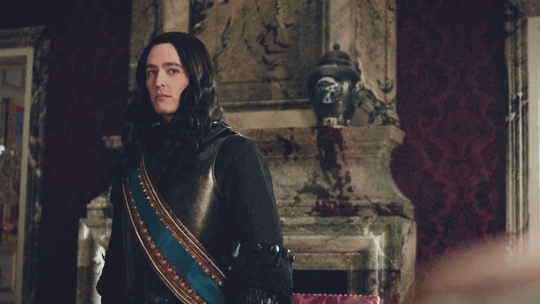

Alexander Vlahos as Monsieur Philippe I, Duke of Orléans in Versailles (1.03)
#versailles#monsieur versailles#versailles season 1#versailles series#versailles tv#monsieur#alexander vlahos versailles#alexander vlahos#philippe duke of orléans#philippe versailles#philippe duc d’orleans#philippe d'orléans
324 notes
·
View notes
Text
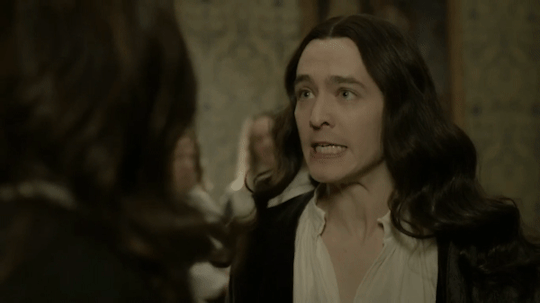
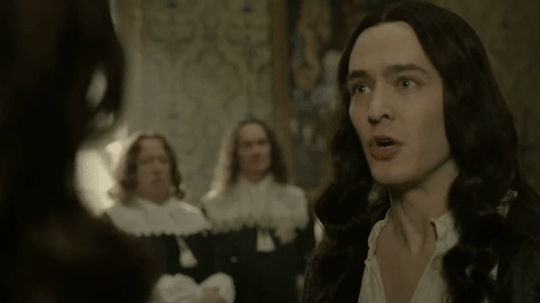
#versailles#versailles gif#philippe d'orléans#philippe d'orléans gif#monsieur#alexander vlahos#alexander vlahos gif#philippe of orleans#philippe of orleans gif#duc d'orléans#duke of orleans
30 notes
·
View notes
Photo
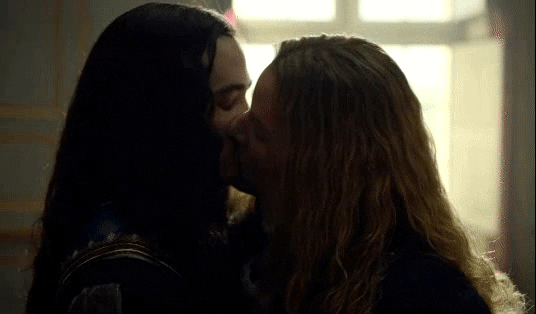
#a little monchevy for your monday#kiss#monchevy#Versailles#otp#chevalier de lorraine#Philippe d'Orléans
208 notes
·
View notes
Text
Court Archetypes: The Dethroned Royals
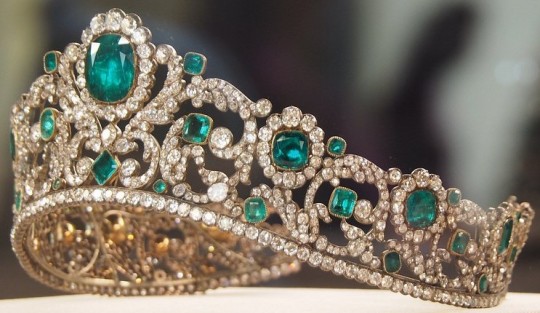
So obviously I was inspired by The Crown to write this post. Pre-WWI Royalty has always piqued my interest, my favourites of course being the Romanovs who I've been obsessed with since I was like six. But the tragic ends and fates of royals who have been deposed have always caught my interest. So in this post, also inspired by an ask sent in by @therealcommanderbear , we'll be discussing displaced/dethroned royalty and their fates.
Usually when we see this in fiction we have 3 categories.
The Fighter

This displaced monarch fights for what is theirs. They will attempt to win or win back their thrones and kingdoms that are rightfully theirs.
Edward IV: Edward IV was displaced in 1470. He fled for his life after meeting the combined forces of his brother the Duke of Clarence and the Earl of Warwick. He escaped by boat with his close friends and his younger brother, almost drowning at sea before landing in Burgundy. His family escaped to sanctuary where his son, Edward was born. After a chat with the Duke of Burgundy who was kinsman and ally of the king, he returned to England after six months and smashed his enemies in battle at Barnet and Tewkesbury.
Henry Tudor/VII: Henry went into exile at fourteen after the fall of his house. He lived in Brittany with his uncle, waiting in the wings until there was opportunity to return to England. In 1483, an offer was made to let him come home and take up his Dukedom. But in the chaos after the death of the current king, the offer was forgotten. Henry attempted to invade with help from the Duke of Buckingham but was beaten by the weather. He returned in 1485 and won the throne, installing the House of Tudor and ending the Plantagenet line.
Margaret of Anjou & Edward of Westminster: After Henry V died, the kingdom was left to his young son Henry VI. He was not the best king, most adept at praying and sleeping. During the unrest that would eventually unseat him, his wife Margaret took control of their armies and fought for the throne. She was exiled but returned with a Scottish army. She lost some battles and won a few but was eventually beaten and the crown was lost. But after a shock defection from an enemy, the Earl of Warwick, she and her son aimed to take back the throne. The kingdom was won by Warwick yet the Queen and Prince were trapped in France thanks to bad weather. By the time they landed, Warwick was dead, the York king was back and they were effectively fucked. They made a dash to Wales hoping to find support but thanks to a flooded river they were forced to fight at Tewkesbury where the prince died and the queen was captured.
The Refugee

Some royals escape from the coups and revolutions that displace them. They usually flee to family members in other countries or allies in hope that they will shelter them or help them.
Alice of Battenburg & Prince Philip of Edinburgh (Greece & Denmark): After the Greco-Turkish war, things in Greece were getting though for the royal family. After much consideration, the coup that took over exiled Prince Andrew, Princess Alice and their four daughters and their infant son. Famously little Prince Philip was sleeping in a converted fruit crate while this happened. They went to Germany, France and England hopping about without a home. The princesses married into mainly German families and Philip worked in the Navy. In 1952, he married Princess Elizabeth heir to the English throne and shed his foreign titles in favour of a British one. Alice of Battenburg returned to Greece where she founded a nunnery, often selling her jewels to fund the order. During civil unrest, Alice came to England in order to live out her final years at Buckingham Palace.
Dowager Empress Maria Fyodorovna: The mother of Tsar Nicholas II fled Russia during the Revolution. She made it England on invitation from her sister Queen Alexandra. She lobbied to get asylum for the rest of her family but before it could be agreed, it was too late. She returned to Denmark where she died years later.
Marie-Therèse, Madame Royale and Duchess of Angoulême: The only living daughter of Marie Antoinette and Louis XIV was imprisoned along with her mother and brother during the Revolution. After the death of her parents, she was exchanged for French prisoners and sent to her mother's home country of Austria. During the brief restoration, she returned to France and served as Duchess of Angoulême.
Charles II: After the English Civil War, Charles I acted stupidly and got his head cut off leaving us with that cunt Oliver Cromwell. During the time where Cromwell was invading and insulting my country and being a general warty bollocks, the queen had escaped to France with her children. Her daughter Henrietta was married to the Duc of Orléans and her son Charles got busy with the ladies of the court. But Charles was invited back to be king during the Restoration where he chilled on his throne for a good lot of years where he slept around, partied and generally acted awesome. (*plays a loop of Horrible Histories' Charles II's Rap*)
The Tragic

And yet sometimes the story does not end so happily. Revolutions try to destroy the object of their opposition, mainly taking violent options.
Marie Antoinette, Louis XVI & Louis-Charles (Louis XVII): Probably the most famous revolution, the French Revolution claimed the lives of most the immediate Royal family. Louis XVI died first, guillotined after standing trial. His wife Marie Antoinette followed a few months later. Louis-Charles the Dauphin and the accepted king to loyal monarchists was kept in a dank dark cell, bullied into announcing lies that would further smear the reputations of his parents including a testimony that his mother had molested him. Louis-Charles died in the cell, thanks to the damp cell hampering his already ill heath.
Tsar Nicholas II, Tsarina Alexandra, Grand Duchesses Olga, Tatiana, Marie, Anastasia and Tsarevitch Alexei: The Russian Royal family was dethroned during the Russian Revolution and imprisoned by the Bolsheviks. The royal family was sent north to Siberia to live in exile under house arrest. They remained positive thinking that somebody would rescue them be it the White Army or their cousins in England. They believed that they would be banished abroad and sewed their corsets full of jewels. The family was awoken one night to "take a photograph" in the basement of the House of Special Purpose in order to prove they were alive. The family waited along with some close friends, the Tsarina and the crippled Tsarevitch seated. Eleven gunmen entered the chamber and began firing at the family. The men died quickly but thanks to the jewels sewn into their corsets, the women were harder to kill. Once they were dead, the revolutionaries dumped the bodies in a nearby wood separating them so that if anybody found them, they would not think that it was the royal family. During the late half of the 20th century, the bodies were found and identified before being buried.
#court archetypes#court archetypes: dethroned royals#alice of battenburg#Prince philip#Charles ii#edward iv#philippe d'orléans#tsarina alexandra#tsarevich alexei#tsar nicholas ii#grand Duchess olga#grand duchess Tatiana#grand duchess marie#grand duchess Anastasia#royal court#royalty#royal#writing advice#writing advice writing reference#writing reference writing resources#writing references#writing resources writing advice#writing resources#writing royalty#fantasy nobility#writing nobility#nobility#bolshevik revolution#french revolution#Versailles
700 notes
·
View notes